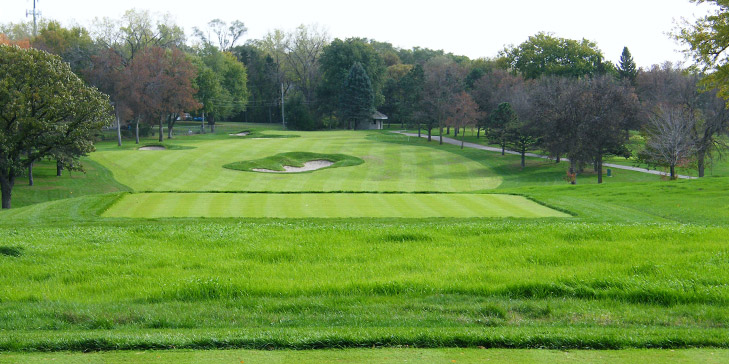Municipal golf courses have enabled countless golfers to discover the game over their 100 year history. But what is the future for the muni in today’s golf market? Adam Lawrence investigates.
Everyone in the golf industry is trying to find the magic bullet. Participation is not growing in most of golf’s established markets, and in countries where the game is new, the task of creating a substantial core of players is proving challenging.
The irony is that the best tool for bringing new players into the game is well-known and long established. Nothing has helped more people from non-golfing backgrounds to learn the game than the municipal golf course.
In pretty much every country in which it has become established, golf began as a game of the elite. Even back home in Scotland, golf was originally a game of the rich; feathery balls were too expensive for ordinary people to afford, and it was only the arrival of the cheap gutty in the middle of the nineteenth century that began the process of giving Scottish golf its Everyman feel. This culture has been handed on to a small number of countries – basically Canada and New Zealand – where Scottish migrants moved in large numbers. But even there, golf’s spread was largely a top-down process.
One of the reasons for Scottish golf’s democratic feel is the tradition of public ownership of golf courses. As is well known, even today, the world’s most famous venue, the Old Course at St Andrews, is essentially a municipal course, managed by the Links Trust on behalf of its owners, the people of St Andrews and Fife. At St Andrews, Carnoustie and a number of other links, multiple golf clubs, some very grand, some less so, play over the same ground, but do not own it. Mostly, though, even in Scotland, golf has gone a different route, with clubs buying or leasing land for their own courses, which they can then make as private as they wish.
This switch towards private ownership of courses is what made the emergence of municipal golf so important. British golf clubs today are known for their generally relaxed attitude towards visitors playing their courses, but such policies remain discretionary, and could be revoked if clubs felt it was in their interests to do so. Back in the early days of golf in the UK, clubs gladly accepted visitors, but generally by way of a letter of introduction from the secretary of the visitor’s own club. This was not the open access of today.
Municipal golf as we know it today is a creation of the late nineteenth and early twentieth century. In fact, it was born in America: Van Cortlandt Park in New York, opened in 1895, was the world’s first municipal golf course. Britain’s first, the Southport Golf Links in Lancashire adjoining the quite grand Hesketh club, was designed by Harry Colt, and opened in 1912, shortly to be followed by Bowring Park in the city of Liverpool.
Today, though, municipal golf has a problem. The glory days of the municipalities on whom such courses depend are past. Golf is more expensive to build and maintain than ever, and hard-pressed cities or counties are struggling to justify spending public funds on keeping what they have, let alone improving it, or even less so adding more facilities.
What, then, is the answer? Should municipalities get out of golf entirely? Should they continue as owners, but regard the courses as businesses, which must either break even or make a profit, or face cuts, even closure? Or is the answer a renewed focus on golf’s benefits, and a willingness to invest further in courses?
For every council and every course, the correct answer will depend on local circumstances. If an area is well supplied with accessible, affordable golf, is there much point the city remaining in the game? On the other hand, when courses close, the most common use for the land is housing, and in many urban and suburban areas, municipal golf courses provide rare oases of green space that the local population, even if not golfers, would greatly miss.
Investing in facilities can work out well. The story of the regeneration of Bethpage State Park’s famous Black course in New York is well-known, but with two US Opens already held on the course since former USGA director David Fay led a push to see the course restored to its former glory, it is surely the highest profile municipal in the world.

‘The Max’ municipal course in Laredo, Texas is one of a small number that have opened in recent years. Photo: John and Linda Henebry
Not every muni is or can be Bethpage. But at the same time,there is plenty of history in the muni world. The Keller Golf Course in Minnesota, for example, held the USPGA Championship twice in the 1930s and 1940s, and was a regular stop for the professional tour until the late 1960s. Now, Keller’s glory days may be on the way back. For the last two years, golf architect Richard Mandell has been leading an extensive renovation programme on the course, which originally opened in 1929. Contractor Duininck Golf has handled the construction work. The revamped Keller will open in the spring, and Twin Cities golf commentators are expecting a flood of praise for the work. Along with a new clubhouse, Ramsey County authorities have committed a large amount of money – over US$4 million for the golf course itself – to rebuilding Keller. Will local taxpayers get value for this investment? Only time will tell.
Other historic US municipal courses are being lined up for similar work. In Philadelphia, local golfers have been campaigning to restore the Cobbs Creek municipal in the Ardmore district, which was originally designed by Hugh Wilson, the creator of the nearby Merion course, in 1916. “Nothing has brought better vibes to golf than the resurgence of rundown munis,” says golf writer and historian Geoff Shackelford, who has toured the Cobbs Creek course. “If there is an old public course of architectural significance crying out for attention, it’s this one. Cobbs Creek is currently a mess architecturally. But the bones are there: grand-scale property, great golf city, strong architectural lineage and a beautiful setting.”
Golf architect Gil Hanse has signed on for the Cobbs Creek restoration, and the city authorities have said they are keen, if the money can be found. Now, the campaigners, including Villanova University professor Joe Bausch, who led the research programme that uncovered the course’s history, are seeking backers to make the project a reality.

Richard Mandell has been leading a restoration of Keller GC in Minnesota, a former USPGA venue
New municipal courses are rare birds indeed in this day and age, but a few have been built recently. The Chambers Bay course in Tacoma, Washington, which will host next year’s US Open, was built and is owned by the city of University Place. The new Max Mandel Municipal course in Laredo, Texas, which opened in 2013, designed, like Chambers Bay, by the Robert Trent Jones II firm, came about after the heirs of a successful local businessman (after whom the course is named) donated 390 acres of land alongside the Rio Grande to create a public course for the city. “This golf course will be the catalyst for business development and investment in our community,” says city mayor Raul Salinas.
Neither Chambers Bay nor Laredo is a typical municipal course. But both, in their way, demonstrate that golf is more than just a recreational resource for a municipality. It is understandable that, in difficult times, local authorities look to cut costs and find the idea of subsidising an activity like golf hard to stomach. But at the same time, publicly-owned golf courses have a long and proud history, and hopefully a strong future.
Spreading the muni gospel
Municipal golf is confined largely to a few countries. Partly this is an accident of history. The countries where golf established itself long ago typically found people wanting to play the game, but unable to join existing private clubs; this was the root of the municipal golf movement.
In some newer golf countries, there are no munis because there is no need. “We don’t really have municipal golf, because essentially all of our clubs have always been open to visitor play,” says Swedish golf architect Christian Lundin of his home country. But elsewhere, if municipalities were to help get golf courses – even at a very basic level – get started, it could transform the accessibility of the game in many countries.
Is this a practical proposition? Possibly not; in poorer countries, for example, it is hard to argue that local authorities don’t have better things to do with their limited resources. On the other hand, in areas where cities are growing at a huge rate, the creation of golf courses would protect open space, in the same way it has done so in the UK and the US. It would provide opportunities for recreation that people could continue all their lives, with possible public health benefits as a result. And it would help create stable, long-lasting golfing populations, so the game feels less like a dropped-in anomaly for the rich.
Muni renewal
Renovation projects at two municipal golf courses were in 2013 honoured as part of the American Society of Golf Course Architects’ Design Excellence Recognition Program.
Rock Manor GC

Photo: Joe Bausch
The largest state project in Delaware’s history was the transformation of the interchange between the I-95 freeway and Route 202, in the city of Wilmington. Rock Manor Golf Course, which opened in 1922, was for years the city’s only municipal golf course. It is situated directly alongside the interchange, and had been encroached upon over the years as the highways expanded, reducing it to a par 67 of 5,600 yards. It was expected to be lost entirely as part of the new construction project.
However, the city asked George Golf Design to create a master plan for the course that could work within the multiple constraints of the project. The firm would also coordinate management of the requirements of more than ten government agencies.
The course is adjacent to the local drinking water supply and residential developments. A key requirement was for the site to become part of the flood attenuation solution for the area. The nearby Matson Run Watershed had flooded following Hurricane Hugo, and loss-of-life was a reality for nearby residents.
George Golf Design oversaw this huge and challenging engineering project, and managed to create a 6,400 yard, par-71 layout that fulfilled all the infrastructure requirements and won several design awards in the process. “Creating flood attenuation working around utilities and routing around a major interchange challenged us to produce something playable, fun, beautiful and environmentally improved,” says Lester George, ASGCA, the firm’s principal.
Stevens Park GC

Photo: Trey Kemp
There were many driving factors for the renovation of Stevens Park, a public course owned by the City of Dallas, but the strongest was competition. A number of new courses had opened in the local area and, combined with the renovation of some existing courses serving the same market, Stevens Park was finding it difficult to retain its customer base.
The club employed Colligan Golf Design to oversee a comprehensive renovation of the course, and set about developing a wish list with the city, golf pro, superintendent and architect. This would include improving playability for all levels of golfers, overhauling practice facilities and rebuilding greens to USGA specifications. The renovation would also address erosion within the large meandering creek that ran through the site, see the installation of a new irrigation system which could use treated water, introduce concrete cart paths and improve both turf and planting throughout the site.
Colligan Golf Design set about creating a project plan that could achieve these requirements within the budget that had been set. John Colligan, ASGCA says: “We kept earthworks to a minimum, and were able to achieve all of the requirements of the project, incorporating new bermudagrasses throughout the course, adding two new bridges and renovating three others, completely overhauling the drainage and irrigation system and creating a landscape design that included the planting of 900 trees and 2,000 rose bushes, along with various other ornamental shrubs.”
The renovation was completed within budget and has received rave reviews from players and the media, being touted as “what public golf should be: affordable, maintainable, beautiful and playable”. But perhaps the most compelling evidence of success is in the numbers: Stevens Park has increased the number of rounds played from 30,000 to 60,000.
To read about all twelve golf design projects that were honoured within the ASGCA’s Design Excellence Recognition Program in 2013, download the Fall 2013 edition of By Design via www.asgca.org
This article was first published in Golf Course Architecture, January 2014